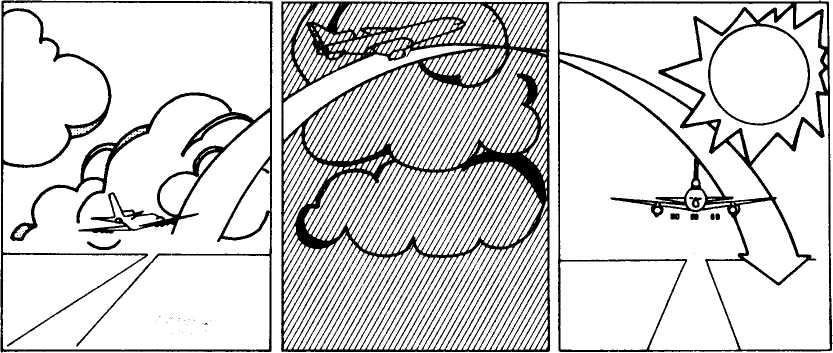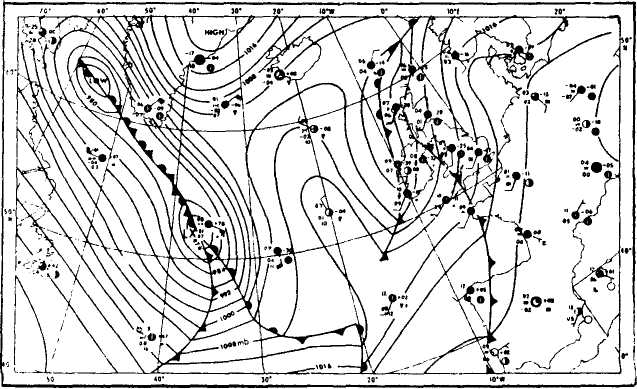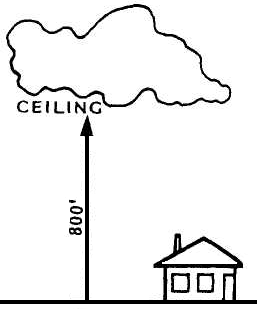
- •International civil aviation organization
- •English for air traffic controllers
- •Introduction
- •Lesson 1 flight ba 624 from mirabel international airport, montreal to heathrow international airport, london
- •Ba 624 at holding position
- •Vocabulary
- •Lesson 2
- •Aeronautical information service (ais)
- •Vocabulary
- •Lesson 3
- •The effects of the weather on aviation
- •Vocabulary
- •Lesson 4 the control tower
- •Vocabulary
- •Lesson 5 approach control
- •Vocabulary
- •Lesson 6 a conversation between a flight dispatcher and a pilot
- •Vocabulary
- •Lesson 7 area control service
- •Vocabulary
- •Lesson 8 radio navigation aids - vor/dme
- •Lesson 9 radio navigation aids aids to final approach and landing ils
- •Ils facility
- •Vocabulary
- •Lesson 10 conversations
- •Vocabulary
- •Lesson 11
- •Approach and landing
- •Lesson 12
- •Visual aids for navigation markings and lights
- •Vocabulary
- •Vasis is
- •Lesson 13 a short history of radar
- •Reflected energy
- •Vocabulary
- •Lesson 14 some problems associated with radar
- •Vocabulary
- •Lesson 15 other navigational aids
- •Vocabulary
- •Vocabulary index
Lesson 3

A weather forecast gives the pilot information
on weather conditions which may be expected.
The effects of the weather on aviation
Except perhaps for local or very short flights, a pilot, before taking off, obtains a weather forecast (1) giving him the weather conditions which are expected along the route of his flight and at his destination. Because weather conditions affect aircraft in flight, to a considerable extent, special aviation forecasts are provided by meteorologists (2) at weather offices all over the world.
The meteorologist, or forecaster, prepares a weather chart which shows the current weather conditions (3) over the whole country. The current weather chart is called a synoptic chart. (4) This synoptic chart shows the areas of low pressure, (5) the areas of high pressure, (6) where precipitation (7) is falling, and all other weather conditions across the country.
From this weather map, the forecaster can advise pilots of the weather conditions they can expect to encounter during their flights. A high pressure area, for instance usually means good weather while a low pressure area usually involves one or more fronts (8) producing clouds and precipitation over many hundreds of miles.
A pilot needs to know the wind direction and speed. A headwind (9) will obviously delay the arrival of flights and is to be avoided if at all possible. A tailwind (10) on the other hand, can be of great advantage as it increases the ground speed (11) and results in a reduction in fuel consumption. Winds vary with altitude, and also from one place to another, so information on winds is very important.
Pilots will pay particular attention to a low which lies en route, and the weather conditions associated with that low pressure area. The associated cold (12) or warm fronts (13) could involve clouds, thunderstorm, snow, rain, and turbulence. From his charts, the meteorologist can forecast where this weather will be at a certain time in the future, and with the help of these predictions, the pilot will decide which route to fly and when and he will know what weather conditions to expect. Should the forecast be very bad, for example, dense fog or poor visibility due to snow, the pilot may decide to postpone his flight. A pilot flying VFR would also cancel his flight because of low ceiling (14) or low overcast (15) conditions en route.
Vocabulary
|
|
|
|
|
|
|
|
|
|
|
|
|
|
|
|
|
|
|
|
|
|
|
|
|
|
|
|
|
|

Weather Map
CONVERSATION
I heard the weather forecast on the radio this morning. It said it was going to rain. Is it raining now? Does it always rain just because it is forecast? Is the weather forecast important to the pilot? To a sailor? To a motorist? To whom is the weather forecast important? What is the weather forecast for today? For tomorrow? When does a pilot need the weather forecast, before or after the flight?
A meteorologist is qualified to forecast the Can a meteorologist forecast the weather? Can a meteorologist prepare a weather map? What can a meteorologist do? Can a farmer forecast the weather? A sailor? How does a farmer forecast the weather? A sailor? A meteorologist?
The current weather conditions in this area are good/poor/cloudy/overcast etc. Look out of the window and describe the current weather. Are you interested in the current weather? In tomorrow's weather? In yesterday's weather? Why are you only interested in the current weather and in tomorrow's weather? Why is the pilot more interested in the weather forecast than in the current weather?
Does a meteorologist prepare the synoptic chart? Does he prepare the navigational chart? What chart does a meteorologist prepare?
Does a low pressure area bring poor weather? Does a low pressure area also bring good weather? What sort of weather does a low pressure area bring? Can a low pressure area affect an area many hundreds of miles away? Can it bring clouds/ rain/snow/hail/other precipitation? Can a meteorologist show a low pressure area on his chart? Who is interested in a low pressure area? Why is a pilot interested in a low pressure area?
Does a high pressure area bring fair weather? Sunny skies? Clear days? Does a meteorologist show a high pressure area on a synoptic chart? How does he show a high or a low pressure area on his synoptic chart?
Is rain precipitation? Snow? Hail? Turbulence? Wind? Name three kinds of precipitation.
Is a headwind in front of the aircraft? Do pilots like headwinds? Does a plane consume more or less fuel with a headwind? Does a plane go faster or slower with a headwind? Does a plane arrive early or late with a headwind?
If headwinds are in front of a plane, are tailwinds in the rear? Are tailwinds good for fuel consumption? What winds do pilots prefer? Why do pilots prefer tailwinds?
If a pilot travels a distance of 100 miles in one hour is his ground speed 100 mph? If he travels a distance of 60 miles in one hour what is his ground speed? What type of wind affects his ground speed?
 Is
a front
shown on a weather map? Does a forecaster show a front on a synoptic
chart? Does he show a front on the synoptic chart to the pilot? To
the navigator? To the radio maintenance technician? To whom does he
show a front on the synoptic chart? How many types of fronts are
there?
Is
a front
shown on a weather map? Does a forecaster show a front on a synoptic
chart? Does he show a front on the synoptic chart to the pilot? To
the navigator? To the radio maintenance technician? To whom does he
show a front on the synoptic chart? How many types of fronts are
there?Do we find cold fronts on a weather map? On a navigation map? On what sort of maps do we find cold fronts? Does a meteorologist prepare a weather map showing the cold fronts? Does a pilot prepare a weather map showing the cold fronts? Who prepares a weather map showing the cold fronts?
Is a warm front also found on a weather map? Can pilots recognize a warm front on a weather map? Does everyone recognize a warm front on a weather map? Who recognizes a warm front on a weather map?
A low ceiling means that the clouds are low. Are the clouds low today? Do we have a low ceiling? Would the ceiling today trouble a pilot? Is 800 feet a low ceiling? 15,000 feet? What do you consider is a low ceiling of clouds? What effect can a low ceiling have on flying?
With a low ceiling are there many clouds in the sky? Are there more clouds in the sky when the sky is overcast? Can you see any blue sky when the sky is overcast? What colour is the sky when it is overcast?
WRITTEN EXERCISES
Instructions to students: The verb "to advise" and the noun "the advice" often cause some confusion. Similarly the verb "to affect" and the noun "the effect". In the following sentences choose the correct word.
|
|
|
|
|
|
|
|
|
|
|
|
|
|
